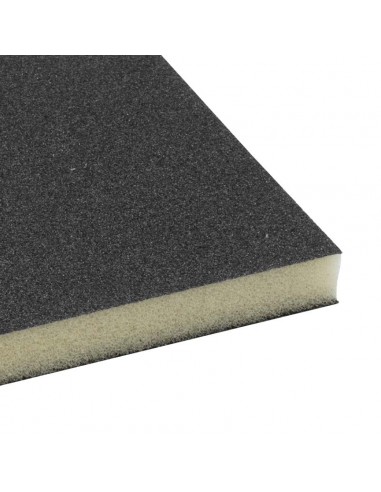FREE shipping to mainland Spain and Portugal on orders over €180 (except for large volumes) see more discountssee fewer discounts.
25% off Fiamma and Thule awnings for in-store pickup.
Free shipping on awnings with home delivery.
Big price drop across the entire catalog.
Professional offers and discounts - call 868 619 119.
FREE shipping to mainland Spain and Portugal on orders over €180 (except for large volumes) see more discountssee fewer discounts.
25% off Fiamma and Thule awnings for in-store pickup.
Free shipping on awnings with home delivery.
Big price drop across the entire catalog.
Professional offers and discounts - call 868 619 119.
Lija sponge
The sponge is a flexible and versatile abrasion tool used to sand surfaces of various materials such as wood, metal and plastic
Lija sponge.
The sponge is a flexible and versatile abrasion tool used to sand surfaces of various materials such as wood, metal and plastic.
These sponges are covered with abrasive grains that can vary in size, allowing a sanding from very thin to thicker. Unlike the traditional sandpaper, the lip sponges can adapt to irregular surfaces and are easier to handle in curved areas or with details.
Advantages of soy sponges:
- Flexibility: They are easily adapted to curved surfaces and areas difficult to reach.
- Durability: They are more resistant to tear and can last longer than the traditional sandpaper.
- Comfort: Your form and material are more comfortable to support and use for extended periods.
- Versatility: They can be used in dry or wet, offering more options according to the type of work.
Types of soy sponges:
- Fine grain sponges: Ideal for finished work and fine details.
- Medium grain sponges: Suitable for sanding surfaces and removing paint or varnish.
- Thick grain sponges: Used for debaste work or material removal.
Use of soy sponge:
- Surface preparation: Before painting or applying a finish, the sand sponge can smooth the surface and remove imperfections.
- Furniture Restoration: To remove old layers of paint or varnish and prepare the wood for a new finish.
- Automotive: In the repair and preparation of metal surfaces to paint.
- Manuals: To sand and soften DIY projects and crafts.
Tips for using the sponge:
1. Select the right grain: Choose the right grain sponge according to the specific task.
2. Light in the right direction: On wooden surfaces, always sand in the direction of the vein to avoid rays.
3. Apply moderate pressure: Let the sponge do the job without applying too much force to avoid damage.
4. Keep the sponge clean: Clean the sponge regularly to avoid dust accumulation and maintain its effectiveness.
You might also like










